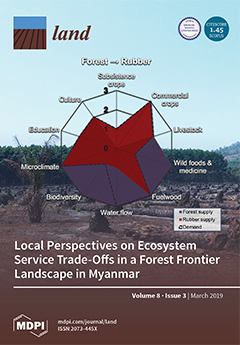Resource information
Generating land capability class guidelines at a watershed scale has become a priority in sustainable agricultural land use. This study analyzed the area of cultivated land use situated on the non-arable land-capability class in the Jema watershed in the Upper Blue Nile River Basin. Soil surveys, meteorological ground observations, a digital elevation model (DEM) at 30 m, Meteosat at 10 km × 10 km and Landsat at 30 m were used to generate the sample soil texture class, average annual total rainfall (ATRF in mm), terrain, slope (%), elevation (m a.s.l) and land-use land cover (%). The land capability class was analyzed by considering raster layers of terrain, the average ATRF and soil texture. Geo-statistics was employed to fit a surface of soil texture and average ATRF estimates. An overlay technique was used to compute the proportion of cultivated land placed on non-arable land. As per the results of the terrain analysis, the elevation (m a.s.l) of the watershed is in the range of 1895 to 3518 m. The slope was found to be in the range of 0 to 45%. The amount of estimated rainfall ranged from 1640 to 131 mm with value declined from the lower to the higher elevation. Clay loam, clay and heavy clay were found to be the major soil texture classes. Four land capability classes, i.e., II, III, IV (arable) and V (non-arable), were identified with proportions of 28.56%, 45.74%, 22.16% and 3.54%, respectively. Seven land-use land covers were identified, i.e., annual crop land, grazing land, bush land, bare land, settlement land, forestland and water bodies, with proportions of 42.1, 35.9, 8.90, 8.3, 2.6, 2.1, and 0.2, respectively. Around 1707.7 ha of land in the watershed is categorized under non-arable land that cannot be used for annual crop cultivation at any level of intensity. Around 437 ha (3.5%) of land was cultivated on non-arable land. To conclude, the observed unsustainable crop land use could maximize soil loss in upstream regions and siltation and flooding downstream. The annual crop land use that was observed on non-arable land needs to be replaced with perennial crops, pasture and/or forest land uses.


